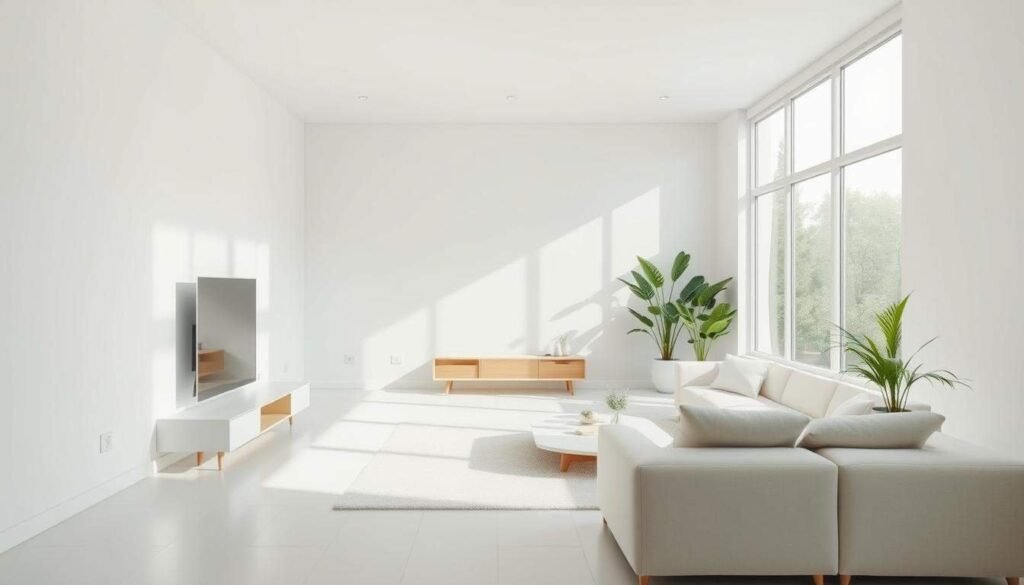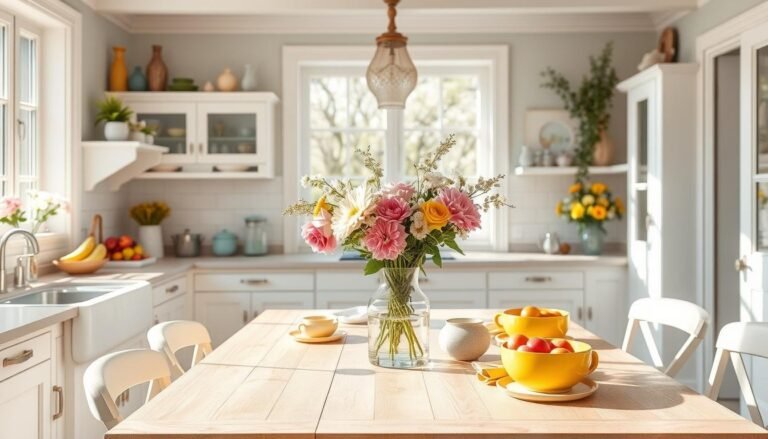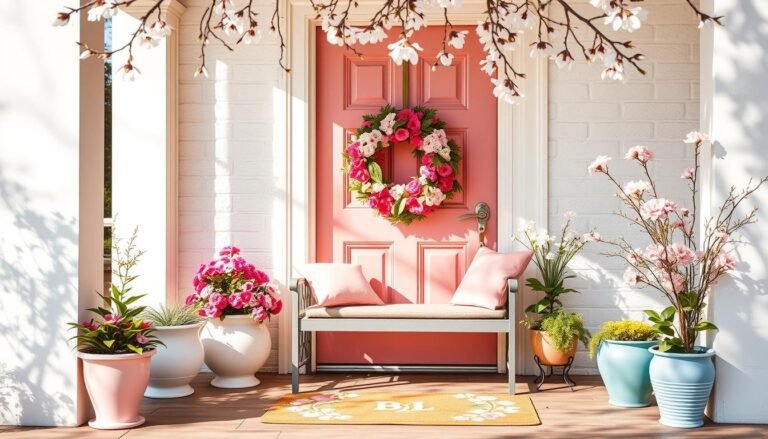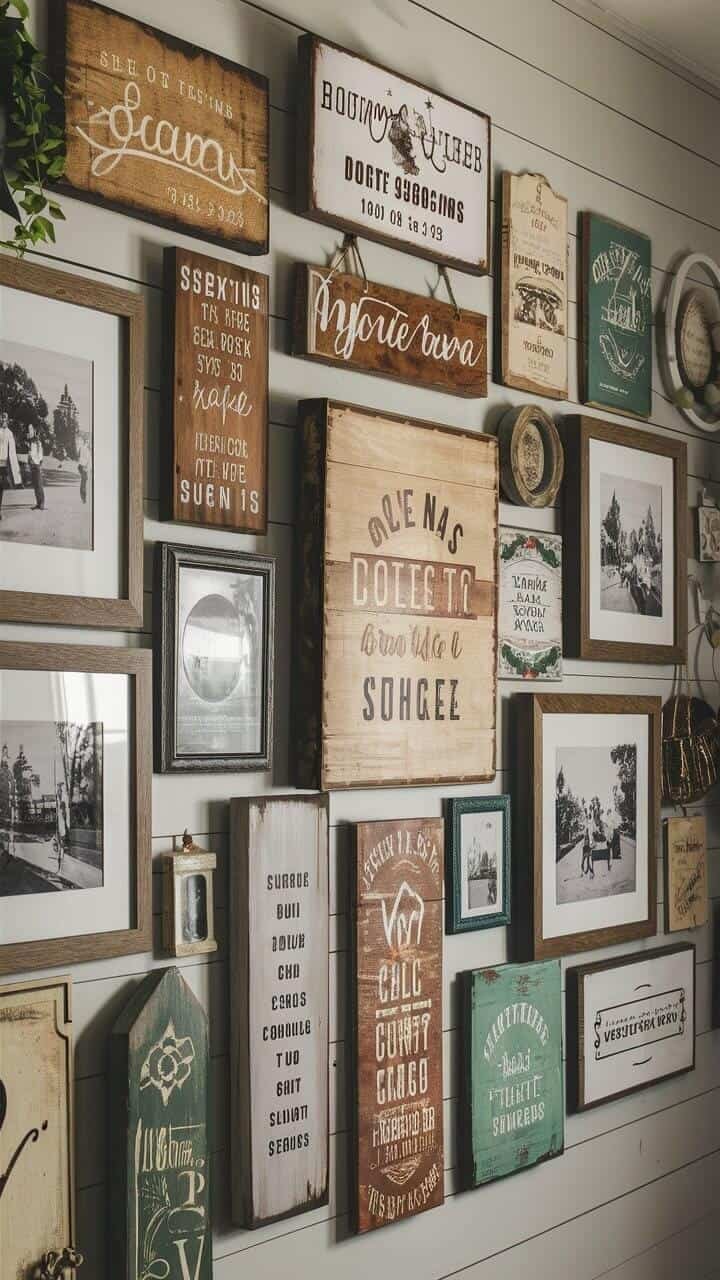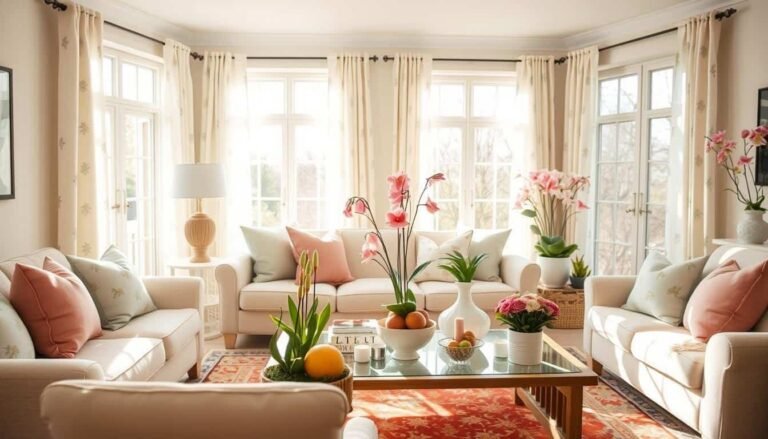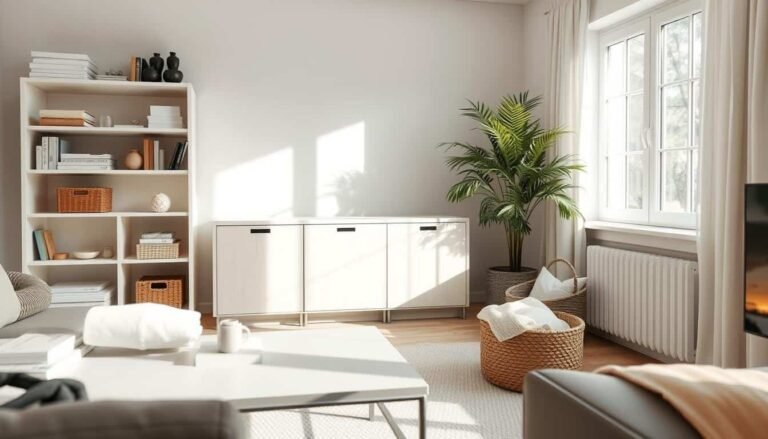Minimalist Style for a Clean and Calm Home
This post may contain affiliate links. As an Amazon Associate, I earn from qualifying purchases. If you click and buy, we may earn a small commission at no extra cost to you. Learn more.
In a world filled with constant distractions and overwhelming clutter, the concept of minimalist home design has gained immense popularity. Embracing a minimalist style can transform your living space into a serene oasis, where every element is intentional and contributes to a sense of calm and simplicity. This article will guide you through the principles of minimalist home design, offering practical tips and insights to help you create a clean and tranquil environment that nourishes your well-being.
Contents
- 1 What is Minimalism in Home Design?
- 2 Choosing a Minimalist Color Palette
- 3 Furniture Selection for Minimalist Homes
- 4 Decluttering Your Space: First Steps
- 5 Eco-Friendly Minimalism: Sustainable Choices
- 6 Maximizing Space in a Minimalist Home
- 7 Minimalist Décor: Enhancing Simplicity
- 8 Creating a Calm Atmosphere
- 9 Room-by-Room Minimalist Tips
- 10 Smart Technology for Minimalist Homes
- 11 Maintaining Your Minimalist Home
- 12 Common Mistakes to Avoid in Minimalist Design
- 13 FAQ
- 13.1 What is the key difference between minimalist and traditional home design?
- 13.2 How can I choose the right color palette for my minimalist home?
- 13.3 What are some tips for decluttering and maintaining a minimalist space?
- 13.4 How can I incorporate smart technology into a minimalist home?
- 13.5 What are some common mistakes to avoid when designing a minimalist home?
Key Takeaways
- Minimalist design focuses on creating a clean, uncluttered, and calming living space.
- Incorporating neutral tones, multi-purpose furniture, and strategic decluttering can help achieve a minimalist aesthetic.
- Sustainable and eco-friendly choices are integral to a minimalist lifestyle, promoting environmental consciousness.
- Clever storage solutions and maximizing vertical space can enhance the sense of openness and spaciousness in a minimalist home.
- Maintaining a minimalist home requires consistent routines and mindful decision-making to prevent the accumulation of unnecessary items.
What is Minimalism in Home Design?
Minimalism is a design philosophy that emphasizes simplicity, functionality, and an uncluttered aesthetic. In the context of home design, minimalism encourages the creation of minimalist homes that are visually clean, calming, and focused on the essential elements. By embracing this approach, homeowners can enjoy the benefits of a simple living lifestyle and an uncluttered aesthetic.
Defining Minimalism
At its core, minimalism is about intentionally surrounding oneself with only the necessary and meaningful. It’s a mindset that challenges the traditional notion of “more is better” and instead, prioritizes quality over quantity. Minimalist homes often feature clean lines, neutral color palettes, and a focus on the harmony between form and function.
Key Principles of Minimalism
- Simplicity: Minimalism encourages the elimination of unnecessary elements, creating a serene and uncluttered environment.
- Functionality: Every item in a minimalist home serves a clear purpose, with a focus on practical and multi-purpose furniture and decor.
- Intentionality: Minimalists make conscious choices about what they keep in their homes, ensuring that each item adds value and aligns with their lifestyle.
Benefits of a Minimalist Home
Adopting a minimalist approach to home design can provide a range of benefits, including:
- Reduced stress and increased focus: A decluttered, minimalist home can help create a calming atmosphere, allowing for greater mental clarity and productivity.
- Improved efficiency: With fewer possessions, minimalist homes are easier to maintain and clean, freeing up time and energy for more meaningful pursuits.
- Financial savings: Embracing a simple living mindset can lead to reduced spending on unnecessary items, enabling homeowners to allocate their resources more wisely.
“Minimalism is not the lack of something. It’s the mindful presence of something.” – Joshua Becker
By understanding the core principles of minimalism and its potential benefits, homeowners can embark on a journey towards creating a minimalist home that fosters a sense of calm, simplicity, and intentional living.
Choosing a Minimalist Color Palette
Creating a clean and calm home environment starts with the right color palette. In minimalist interior design, neutral tones play a crucial role in cultivating a serene atmosphere. By embracing the beauty of neutral shades, you can establish a foundation that promotes a sense of tranquility and balance throughout your living space.
Neutral Tones for Serenity
Shades of white, beige, gray, and soft earth tones are the cornerstones of a minimalist color scheme. These neutral hues have a calming effect, helping to create a soothing and clean and calm ambiance. They also act as a blank canvas, allowing the natural elements and textures in your home to take center stage.
Adding Accents
While neutral colors form the backbone of a minimalist serene environment, carefully selected accent colors can add depth and visual interest to your space. Consider incorporating pops of muted blues, greens, or even subtle pastels to complement the modern interior design and prevent the space from feeling too sterile.
Importance of Consistency
Consistency is key when it comes to a minimalist color scheme. Maintaining a cohesive palette throughout your home ensures a harmonious and visually appealing look. Avoid introducing too many disparate colors, as this can disrupt the clean and calm aesthetic you’re trying to achieve.
“The essence of minimalist design is to create a serene environment that allows the natural elements and textures to shine.”
By carefully curating a minimalist color palette, you can transform your living space into a haven of tranquility and clean and calm sophistication. Embrace the power of neutral tones, thoughtfully incorporate accent colors, and maintain consistency for a truly harmonious and serene environment.
Furniture Selection for Minimalist Homes
Embracing a minimalist lifestyle extends beyond decluttering and decluttering your living space. It also involves carefully selecting furniture that aligns with the principles of modern interior design. When it comes to furnishing a minimalist home, the focus should be on functionality, versatility, and quality over quantity.
Functional Over Decorative
In a minimalist home, every piece of furniture should serve a practical purpose. Avoid purchasing items that are purely decorative or take up unnecessary space. Instead, choose furniture that can fulfill multiple functions, such as a coffee table with hidden storage or a bed with built-in drawers.
Multi-Purpose Furniture
- Invest in furniture that can be used in multiple ways, such as a sofa that can be converted into a guest bed or a dining table that can double as a workspace.
- Look for pieces with hidden storage compartments or adjustable features to maximize the use of your living space.
- Consider modular furniture systems that allow you to customize and rearrange your home as your needs change.
Quality over Quantity
When furnishing a minimalist home, it’s better to invest in a few high-quality pieces rather than accumulating a large number of cheaper, disposable items. Quality furniture not only lasts longer but also contributes to the overall aesthetic and ambiance of a minimalist space.
“In the world of minimalism, less is more. Carefully selected, well-made furniture can transform a space and create a sense of calm and serenity.”
By focusing on functional, multi-purpose, and high-quality furniture, you can create a minimalist home that is both visually appealing and practical for your everyday living. This approach to furniture selection aligns with the core principles of simple living and modern interior design.
Decluttering Your Space: First Steps
Creating a minimalist, decluttered space is a transformative process that can bring a sense of calm and serenity to your home. The first step towards achieving this uncluttered aesthetic is to take a deep dive into your belongings and assess what truly serves a purpose in your life. This honest evaluation is crucial for letting go of the unnecessary and making room for a simpler, more intentional living environment.
Assessing Your Belongings
Begin by going through each room and every nook and cranny, examining every item you own. Ask yourself these questions: When was the last time I used this? Does it bring me joy or serve a practical function in my daily life? Be ruthless in your assessment, as the goal is to identify and eliminate the clutter that has accumulated over time.
The One-Year Rule
A helpful guideline to follow is the one-year rule. If you haven’t used or needed an item in the past 12 months, chances are you don’t need it. This rule can be a game-changer in the decluttering process, as it encourages you to let go of the things that no longer serve a purpose in your simple living lifestyle.
Strategies for Letting Go
- Donate or sell items in good condition that you no longer need.
- Recycle or responsibly dispose of items that are broken or worn out.
- Establish a “maybe” box for items you’re unsure about, and revisit it in a few months.
- Embrace the emotional detachment process, acknowledging that letting go can be challenging but ultimately rewarding.
By diligently assessing your belongings, applying the one-year rule, and employing effective strategies for letting go, you’ll be well on your way to creating a decluttered space that aligns with your minimalist lifestyle and uncluttered aesthetic. This process may not be easy, but the rewards of a calm, serene home are well worth the effort.
Eco-Friendly Minimalism: Sustainable Choices
In the pursuit of a harmonious and minimalist home, embracing eco-friendly solutions is a natural extension. Sustainable living not only aligns with the principles of simplicity but also offers a host of benefits for both the environment and your well-being. As you curate your modern interior design, consider these essential elements of eco-friendly minimalism.
Importance of Sustainable Living
By incorporating sustainable practices into your home, you contribute to a healthier planet and a more mindful lifestyle. Minimalism and sustainability go hand in hand, as they both emphasize the value of quality over quantity and the importance of making conscious choices. Adopting eco-friendly practices can have a profound impact, reducing your carbon footprint and promoting a sense of balance and serenity in your living spaces.
Choosing Eco-Conscious Materials
When selecting furniture and décor for your minimalist home, prioritize natural materials that are both visually appealing and environmentally responsible. Look for pieces made from renewable resources, such as bamboo, reclaimed wood, or organic cotton. These natural materials not only contribute to a simple living aesthetic but also support a modern interior design that is kinder to the planet.
Benefits of Second-Hand Furniture
Embracing the concept of secondhand furniture is a remarkable way to infuse your minimalist home with eco-friendly charm. Repurposing pre-loved pieces not only reduces waste but also imbues your space with character and unique charm. By giving new life to gently used furniture, you’re not only saving resources but also creating a one-of-a-kind minimalist haven that reflects your personal style.
“Minimalism and sustainability go hand in hand, as they both emphasize the value of quality over quantity and the importance of making conscious choices.”
Maximizing Space in a Minimalist Home
When it comes to creating a minimalist home, maximizing space is a crucial component. By implementing clever storage solutions, embracing open concept living, and harnessing the power of vertical space, you can enjoy a beautifully uncluttered aesthetic without sacrificing functionality.
Clever Storage Solutions
Minimalist homes thrive on efficient storage. Incorporate multi-purpose furniture, such as ottomans with built-in compartments or beds with under-the-frame drawers, to tuck away everyday items. Utilize wall-mounted shelves and closet organizers to keep surfaces clear and streamlined.
Open Concept Living
An open floor plan is a hallmark of minimalist design, as it creates a seamless, uncluttered aesthetic and a sense of spaciousness. By removing walls and opting for an open concept, you can visually expand the living area and encourage a natural flow of movement throughout the home.
The Power of Vertical Space
- Maximize your open floor plan by taking advantage of vertical space. Install floor-to-ceiling shelves, hang artwork at eye level, and consider lofted sleeping areas to free up square footage.
- The strategic use of vertical space can make even a minimalist home feel airy and spacious.
By embracing clever storage solutions, open concept living, and vertical space, you can create a harmonious, uncluttered aesthetic that feels both visually appealing and functionally efficient.
“The true essence of minimalist living lies in the art of maximizing space through thoughtful design and strategic organization.”
Minimalist Décor: Enhancing Simplicity
In a minimalist home, the décor plays a crucial role in creating a serene environment. By carefully selecting art, accessories, and utilizing natural light, you can elevate the clean and calm aesthetic of your modern interior design. Let’s explore how to incorporate these elements to enhance the simplicity of your minimalist space.
Art with Intent
Minimalist art is a powerful tool to infuse your home with intention and elegance. Rather than cluttering the walls with numerous pieces, focus on selecting a few impactful artworks that speak to your personal style and the overall ambiance of the room. Choose simple, abstract, or monochromatic pieces that complement the clean lines and muted tones of your minimalist décor.
Choosing Minimalist Accessories
Accessories in a minimalist home should be thoughtfully curated, serving a purpose beyond mere decoration. Opt for a small collection of sculptural vases, sleek candle holders, or minimalist plants that add visual interest without overwhelming the space. Remember, less is more when it comes to minimalist accessories.
The Role of Natural Light
In a minimalist home, natural light plays a vital role in enhancing the sense of openness and serenity. Maximize the flow of natural light by strategically positioning furniture and avoiding heavy window treatments. Let the sunlight wash over the clean, uncluttered surfaces, creating a calming and rejuvenating atmosphere throughout your living spaces.
“Simplicity is the ultimate sophistication.” – Leonardo da Vinci
By thoughtfully selecting art, curating minimalist accessories, and embracing the power of natural light, you can elevate the simplicity and beauty of your minimalist home, creating a serene environment that embodies the essence of modern interior design.
Creating a Calm Atmosphere
In a minimalist home, the focus is on crafting a clean and calm environment that promotes serenity and mindfulness. By drawing inspiration from the principles of feng shui, you can create a serene environment that nourishes the soul and fosters a sense of tranquility.
Importance of Airflow and Light
The flow of air and the presence of natural light are crucial elements in establishing a calm and clean atmosphere. Prioritize open floor plans and strategically placed windows to allow for optimal airflow and the influx of natural light. This not only enhances the overall ambiance but also contributes to the feng shui inspired design of your minimalist home.
Choosing the Right Fabrics
The selection of fabrics plays a significant role in creating a soothing and calm atmosphere. Opt for natural, breathable materials such as linen, cotton, or silk that exude a sense of softness and warmth. Avoid heavy, synthetic fabrics that can make the space feel stifling and cluttered.
Incorporating Plants
- Bring in the restorative power of nature by incorporating lush, green plants throughout your minimalist home.
- Not only do plants help purify the air, but they also add a touch of life and vitality to the serene environment.
- Choose low-maintenance, air-purifying plants like succulents, snake plants, or peace lilies to complement the minimalist aesthetic.
By focusing on the importance of airflow, natural light, carefully selected fabrics, and the introduction of plants, you can create a clean and calm atmosphere that embodies the essence of minimalist design and the principles of feng shui.
Room-by-Room Minimalist Tips
When embracing a minimalist lifestyle, it’s crucial to consider how each room in your home can be optimized for simplicity and functionality. From the living room to the bedroom, the right minimalist approach can transform your space into a serene, decluttered haven. Let’s explore some practical tips for creating a minimalist home, one room at a time.
Living Room Essentials
In the living room, focus on the essentials. Invest in a comfortable, multi-purpose sofa that can double as a cozy spot for lounging and entertaining guests. Opt for a clean-lined, neutral-toned piece that blends seamlessly into your minimalist aesthetic. Complement the sofa with a few well-chosen accent chairs or a minimalist coffee table, and consider incorporating hidden storage solutions to keep your living room decluttered and simple living.
Kitchen Simplification
The minimalist home extends to the kitchen, where efficiency and visual appeal are key. Streamline your countertops by only keeping essential appliances and cookware on display. Utilize drawer organizers and pull-out shelves to neatly store your utensils, spices, and other kitchen essentials. Incorporate a neutral color palette and choose sleek, handleless cabinets to create a cohesive, decluttered space.
Bedroom Sanctuary
The bedroom should be a tranquil oasis, and a minimalist approach can help you achieve this. Start by selecting a simple, high-quality bed frame and mattress. Opt for crisp, white bedding or choose soft, natural tones to set the tone for a peaceful, uncluttered environment. Invest in a few carefully curated pieces of artwork or wall decor, and consider incorporating natural elements, such as plants or natural-fiber baskets, to enhance the minimalist home aesthetic.
“Less is more when it comes to a minimalist home. Focus on the essentials and let the beauty of simplicity shine through.”
Smart Technology for Minimalist Homes
In the pursuit of a modern interior design and simple living, minimalist homeowners are increasingly turning to smart technology to enhance their uncluttered aesthetic. From streamlining daily tasks to improving energy efficiency, the right smart home devices can be a game-changer for those who value an organized and harmonious living space.
Smart Home Devices
Smart home devices, such as voice-controlled assistants, programmable thermostats, and automated lighting systems, can help minimize physical clutter and simplify everyday routines. By integrating these technologies, homeowners can enjoy a more seamless and efficient living experience, allowing them to focus on the essentials and embrace a truly minimalist lifestyle.
Reducing Clutter with Automation
Automation is a key aspect of smart home technology that supports the minimalist approach. Features like automatic blinds, self-cleaning appliances, and remote-controlled electronics can help reduce the physical clutter and manual tasks associated with home management. This not only contributes to a visually uncluttered space but also frees up time and mental energy for the homeowner.
Energy Efficiency
Smart home devices can also play a crucial role in enhancing the energy efficiency of a minimalist home. Intelligent climate control systems, energy-monitoring devices, and automated power management can help minimize energy consumption and reduce utility bills, aligning with the principles of sustainable living that often underpin the minimalist philosophy.
“Technology should make our lives easier, not more complicated. Smart home devices that streamline tasks and enhance efficiency are the perfect companions for a minimalist lifestyle.”
By embracing smart technology, minimalist homeowners can enjoy the benefits of a clutter-free, energy-efficient, and technologically advanced living space, seamlessly blending modern conveniences with their simple living aspirations.
Maintaining Your Minimalist Home
Embracing a minimalist lifestyle is a journey, not a destination. To maintain a decluttered space, a simple living, and a serene environment, it’s essential to establish routines, practice seasonal decluttering, and cultivate mindfulness in your home maintenance. These strategies will help you preserve the beauty and functionality of your minimalist haven.
Establishing Routines
The key to effortless minimalist living is developing daily habits and routines. Dedicate a few minutes each morning to tidy up your living space, ensuring everything is in its designated place. Implement a weekly or bi-weekly cleaning schedule to keep your home sparkling. By creating these structured routines, you’ll find it easier to maintain a clean and organized minimalist environment.
Seasonal Decluttering
- Twice a year, embark on a comprehensive decluttering session to align your possessions with the changing seasons.
- Assess your wardrobe, swapping out seasonal clothing and donating or selling items you no longer need.
- Evaluate your home decor and other belongings, letting go of anything that no longer serves your minimalist lifestyle.
Mindfulness in Maintenance
Minimalism is not just about the physical space; it’s also a mindset. Approach your home maintenance with a mindful and intentional attitude. Take time to appreciate the beauty of your simple surroundings, and be present in the moment as you tidy and clean. This mindful approach will help you maintain a sense of calm and serenity in your minimalist home.
“The secret of getting ahead is getting started.” – Mark Twain
By establishing routines, embracing seasonal decluttering, and cultivating mindfulness, you can effortlessly maintain a decluttered space, a simple living, and a serene environment in your minimalist home. This ongoing commitment to minimalism will ensure your living space continues to nourish your well-being and support your lifestyle.
Common Mistakes to Avoid in Minimalist Design
Embracing a minimalist lifestyle can be deeply rewarding, but it’s important to avoid common pitfalls along the way. One of the most prevalent mistakes is overthinking the aesthetic at the expense of functionality. While a clean, visually appealing space is desirable, it’s crucial to ensure that the design prioritizes practical needs and daily living.
Overthinking the Aesthetic
It’s easy to get caught up in the allure of a perfectly curated, Instagram-worthy minimalist home. However, this can lead to a space that feels more like a showroom than a comfortable living environment. Remember that minimalism is about simplicity and intentionality, not just creating a visually stunning display.
Holding onto Sentimental Items
Minimalism often requires letting go of material possessions, and this can be particularly challenging when it comes to sentimental items. While it’s important to honor your memories, try to strike a balance between cherishing what truly matters and releasing what no longer serves you. Digitize photos, repurpose meaningful objects, and focus on experiences over physical belongings.
Failing to Adapt Your Space
A minimalist home should be a living, breathing space that evolves with your needs. Resist the temptation to create a static, museum-like environment. Be open to adjusting your layout, furniture, and decor as your lifestyle and preferences change over time. Embrace the fluidity of minimalist design and allow your space to grow and adapt with you.
FAQ
What is the key difference between minimalist and traditional home design?
The fundamental difference lies in the emphasis on simplicity and functionality. Minimalist design focuses on clean lines, neutral color palettes, and the intentional use of space, with a emphasis on decluttering and paring down to only the essentials. Traditional design often features more ornamentation, layered textures, and a focus on filling available space.
How can I choose the right color palette for my minimalist home?
When selecting a color palette for a minimalist home, it’s best to stick to neutral tones like white, beige, gray, and black. These calm, serene colors create a sense of harmony and allow the clean lines and natural materials to take center stage. You can then incorporate small pops of accent colors through accessories and textiles to add visual interest.
What are some tips for decluttering and maintaining a minimalist space?
Effective decluttering starts with assessing your belongings and applying the “one-year rule” – if you haven’t used an item in the past year, it’s likely time to let it go. Create designated storage solutions for the items you do keep, and establish daily routines to maintain an uncluttered aesthetic. Regular seasonal decluttering can also help prevent the gradual buildup of unnecessary items.
How can I incorporate smart technology into a minimalist home?
Smart home devices that automate tasks and reduce physical clutter are well-suited for minimalist design. Look for streamlined, hidden-away smart speakers, lighting controls, and home security systems that seamlessly integrate into your living space. Prioritize energy-efficient technologies that align with the sustainable, intentional ethos of minimalism.
What are some common mistakes to avoid when designing a minimalist home?
Avoid the trap of overthinking the aesthetic at the expense of functionality, as minimalism is ultimately about creating a practical, livable space. Additionally, be mindful of holding onto sentimental items that don’t serve a clear purpose, and make sure to adapt your minimalist design as your needs and preferences evolve over time.



